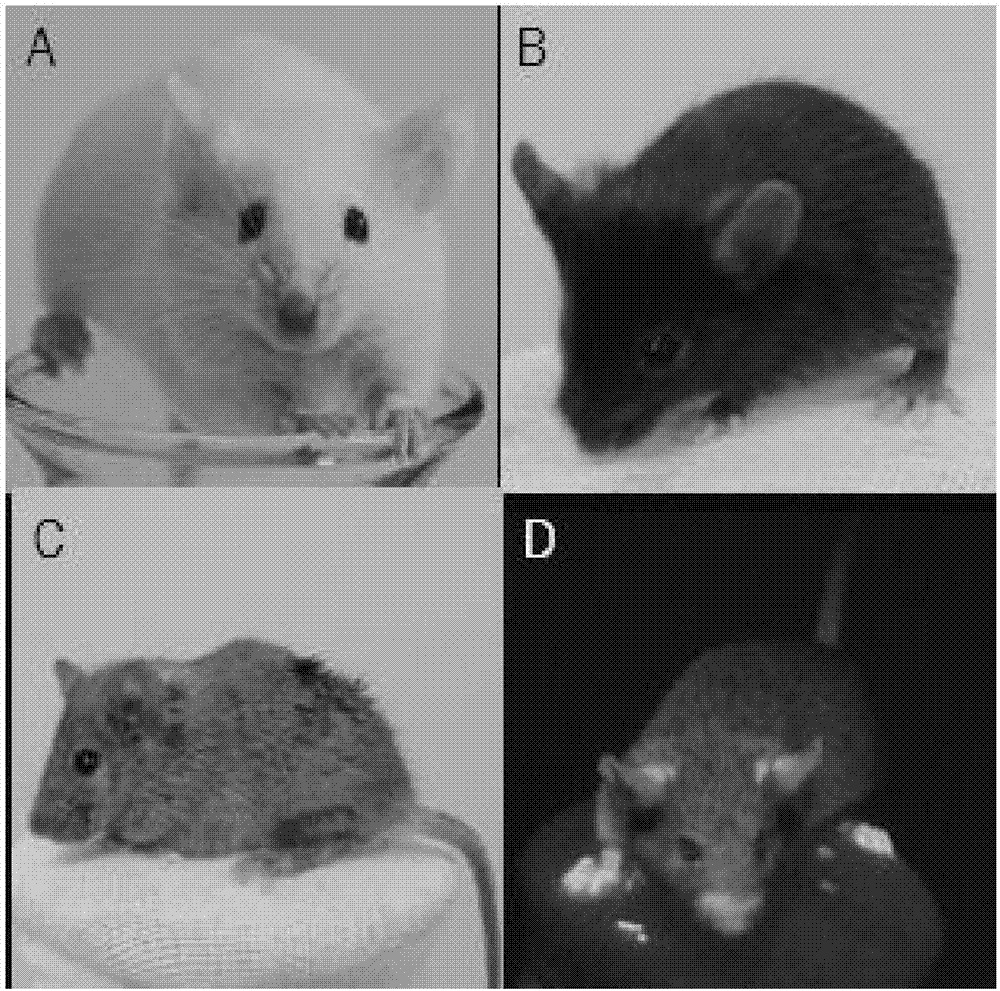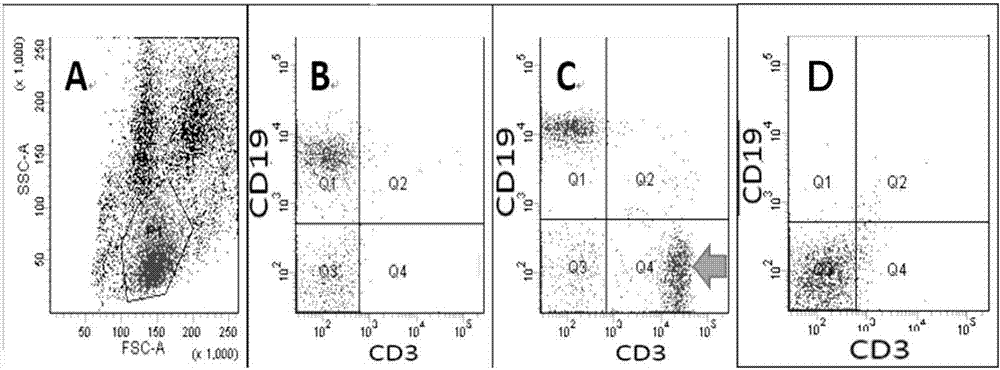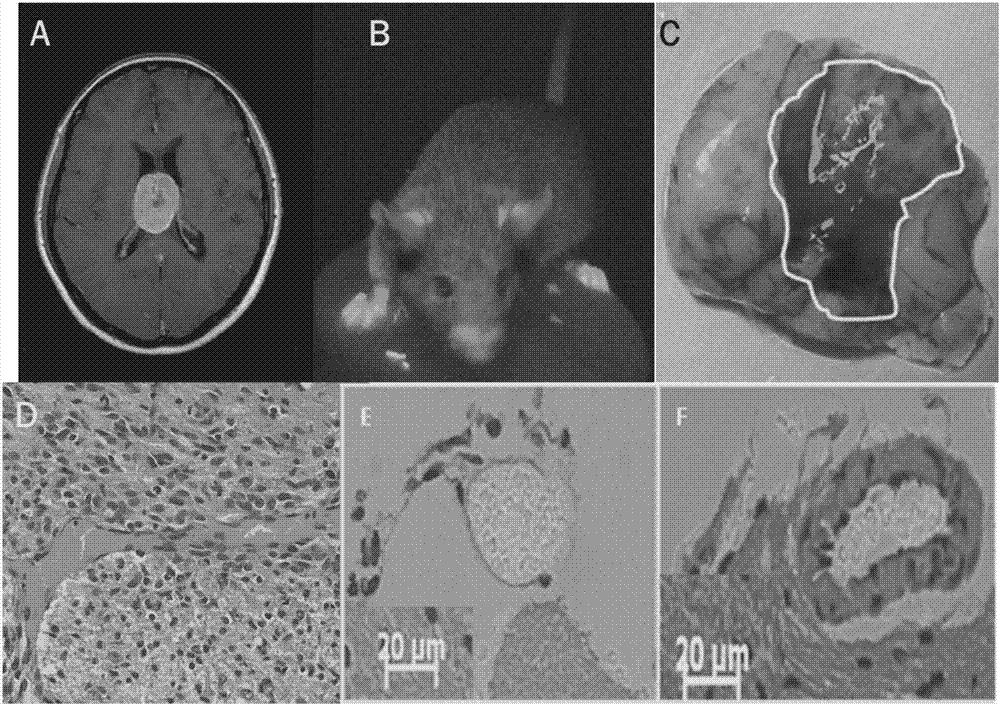Preparation method of enhanced green fluorescence SCID mice model and model application
A green fluorescence and mouse model technology, which is applied in animal husbandry and other fields, can solve the problems that human tissue cells cannot be studied with fluorescent tracer experiments, and achieve high xenotransplantation efficiency
- Summary
- Abstract
- Description
- Claims
- Application Information
AI Technical Summary
Problems solved by technology
Method used
Image
Examples
Embodiment 1
[0020] Example 1 Preparation of NOD / SCID / EGFP mice (enhanced green fluorescent SCID mouse model)
[0021] 1. Main materials and equipment:
[0022] NOD / SCID and green fluorescent protein transgenic mice C57BL / 6-Tg (CAG-EGFP) were purchased from the Model Animal Research Institute of Nanjing University (SCXK Su 2010-0001); independent ventilation cages were purchased from Suzhou Fengshi Experimental Animal Equipment Co., Ltd. ( IVC-II); the biological safety cabinet was purchased from Singapore Yisi Cleaning Equipment Co., Ltd. (ESCO); the small animal multi-mode live imager (In-vivo imaging system FX Pro) was purchased from Kodak Company. Fluorescence flashlight was purchased from Nightsea Company, PCR instrument (AB Company), flow cytometer (BD Company), fluorescence inverted microscope (Nikon Company), CO2 incubator (Germany Heraeus Company). SLY series animal brain slice molds were purchased from Beijing Shuolinyuan Technology Co., Ltd. The frozen microtome was purchased ...
Embodiment 2
[0030] Example 2 Application of Enhanced Green Fluorescent SCID Mouse Model
[0031] The enhanced green fluorescent SCID mouse model obtained by using the method in Example 1 can be used for the research of breast cancer brain metastasis model.
[0032] 1. Clinical specimen tissue blocks were directly inoculated into NOD / SCID / EGFP mice
[0033] Clinical specimen information: Human breast cancer slices were obtained from a 40-year-old married female patient undergoing surgical treatment, provided by the Pathology Department of the Second Affiliated Hospital of Soochow University. Later, due to brain metastases, he was admitted to neurosurgery to remove brain metastases.
[0034] Tissue inoculation method: Select 5 SCID female mice aged 4-6 weeks and expressing EGFP, disinfect the skin of the head after anesthesia with chloral hydrate, cut the skin longitudinally at the center of the top of the head 0.5cm, expose the skull, place it 1.0mm in front of the bregma, At 2.5mm to th...
PUM
 Login to View More
Login to View More Abstract
Description
Claims
Application Information
 Login to View More
Login to View More - R&D
- Intellectual Property
- Life Sciences
- Materials
- Tech Scout
- Unparalleled Data Quality
- Higher Quality Content
- 60% Fewer Hallucinations
Browse by: Latest US Patents, China's latest patents, Technical Efficacy Thesaurus, Application Domain, Technology Topic, Popular Technical Reports.
© 2025 PatSnap. All rights reserved.Legal|Privacy policy|Modern Slavery Act Transparency Statement|Sitemap|About US| Contact US: help@patsnap.com



